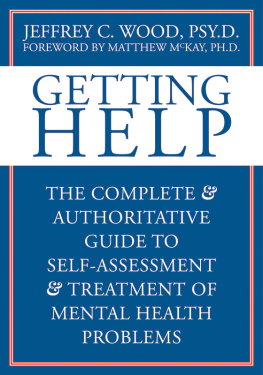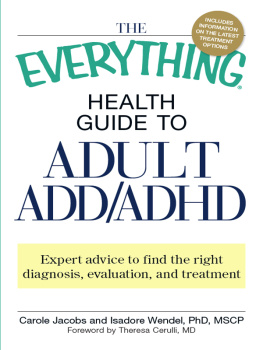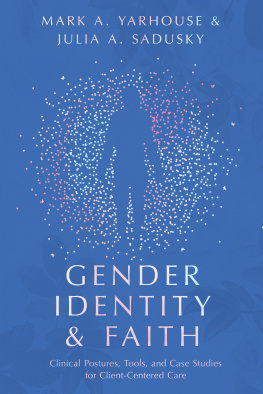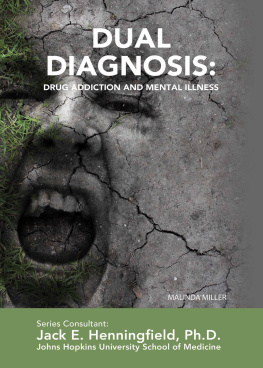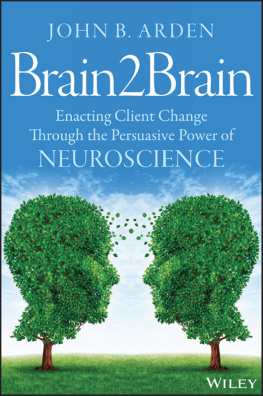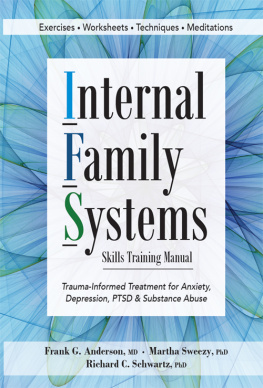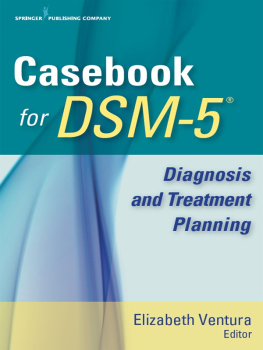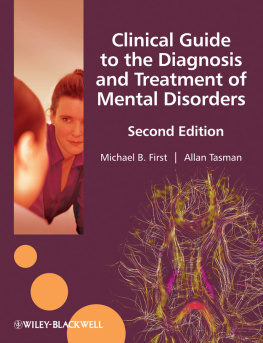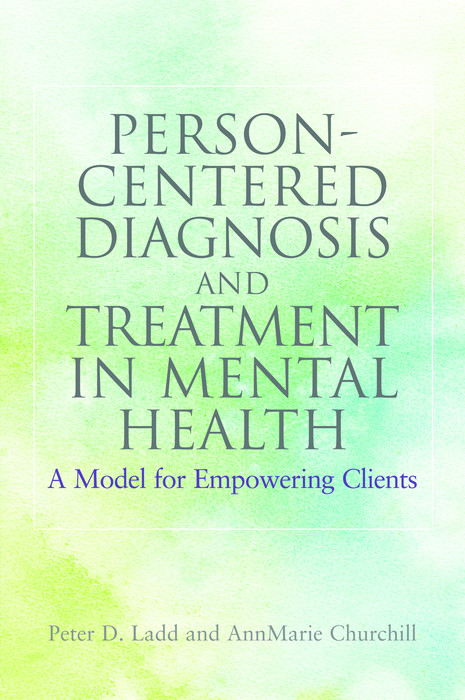PERSON-CENTERED DIAGNOSIS AND TREATMENT IN MENTAL HEALTH
A Model for Empowering Clients
Peter D. Ladd and AnnMarie Churchill
Jessica Kingsley Publishers
London and Philadelphia
First published in 2012
by Jessica Kingsley Publishers
116 Pentonville Road
London N1 9JB, UK
and
400 Market Street, Suite 400
Philadelphia, PA 19106, USA
www.jkp.com
Copyright Peter D. Ladd and AnnMarie Churchill 2012
All rights reserved. No part of this publication may be reproduced in any material form (including photocopying of any pages, storing it in any medium by electronic means and whether or not transiently or incidentally to some other use of this publication) without the written permission of the copyright owner except in accordance with the provisions of the Copyright, Designs and Patents Act 1988 or under the terms of a licence issued by the Copyright Licensing Agency Ltd, Saffron House, 610 Kirby Street, London EC1N 8TS. Applications for the copyright owners written permission to reproduce any part of this publication should be addressed to the publisher.
Warning: The doing of an unauthorised act in relation to a copyright work may result in both a civil claim for damages and criminal prosecution.
Library of Congress Cataloging in Publication Data
Ladd, Peter D.
Person-centered diagnosis and treatment in mental health : a model for empowering clients / Peter D. Ladd and AnnMarie Callahan Churchill.
p. cm.
Includes bibliographical references and index.
ISBN 978-1-84905-886-5 (alk. paper)
1. Mental illness--Treatment. 2. Client-centered psychotherapy. 3. Psychotherapist and patient. I. Churchill, AnnMarie Callahan, 1962- II. Title.
RC481.L33 2012
616.8914--dc23
2011046458
British Library Cataloguing in Publication Data
A CIP catalogue record for this book is available from the British Library
ISBN 978 1 84905 886 5
eISBN 978 0 85700 590 8
Converted to eBook by EasyEPUB
We would like to dedicate this manual to clients and professionals in the mental health system who are searching for empowerment in mental health diagnosis and treatment.
Acknowledgments
We would like to thank those clients who gave their input and collaboration in the writing of this manual, and all of the clients over our combined 50 plus years who shared with us their struggle for health and wellness. Without their assistance, a client empowerment approach would not be possible.
We want to personally thank Stephen Jones from Jessica Kingsley Publishers for expanding the scope of this project. Without his input, this manual may have been significantly different.
Acknowledgment goes out to Victor Frankl and Ashley Montagu formerly residing at the United States International University. Their inspiration can be found throughout this manual. We also acknowledge Don Moncreiff and Paul Colaizzi from Duquesne University where the phenomenological approach found in this manual formed its roots. George Kellys personal construct theory played a role in the constructivist nature of this manual. It is our belief that individuals are empowered when possibilities for ones self and ones life are brought into focus. Further acknowledgment goes out to Kyle Blanchfield and Alannah Fitzgerald from St. Lawrence Universitys Graduate School where person-centered influences formed a philosophy of growth and change. Finally, acknowledgment goes out to Carl Rogers for his former collaboration and inspiration, and for his belief in individual empowerment.
Notes on the Text
We would like to note specific considerations regarding the terminology in this manual. There are terms that need clarification because some have many interpretations that may have different meanings for different readers. The following may need clarification as to their usage.
The use of the term person-centered is commonly associated with the psychologist, Carl Rogers. The term person-centred in this manual is specifically connected to Rogers view on empowerment and focusing on the whole person as a condition of a more person-centred approach. However, there are relevant sections in this manual where Rogerian person-centered therapy was used as an effective treatment option.
The foundation of this manual is not based on a collection of facts. Nor, as with the Diagnostic and Statistical Manual of Mental Disorders (DSM-IV) (American Psychiatric Association 2000, first published 1952), is it based on statistical probability. It is based on experiential possibility. We are most interested in creating possibilities for professionals and clients, with the hope of adding a new perspective on mental health experiences. Keeping this in mind, we have tried to minimize the use of the verb to be and have chosen to use such terms as may be, could be, it seems, it appears, instead of it is. We hope this grammatical choice will give relevance in creating possibilities through the descriptions of both contributing authors and participating clients in this manual.
Many of the mental health treatments in this manual are referenced through abbreviations such as (CBT) for cognitive behavior therapy or (DBT) for dialectical behavior therapy and others. This may be confusing for a lay person reading this manual. To counteract this, descriptions of such abbreviations can be found in Appendix 2.
The terms mental health provider, mental health practitioner, and mental health professional are used interchangeably to describe those individuals who have been trained in providing services in the field of mental health.
The terms client, student, and patient are applied according to the examples given in the manual that describe those individuals receiving services from a professional in the field of mental health.
Masculine and feminine pronouns are used alternately throughout the manual with the intent of balancing out gender bias.
The six client narratives found in the chapters pertaining to mental health disorders and mental health patterns are composites of different clients and reflect no specific client narrative. The composites were formed by understanding the essential patterns found in numerous client experiences. This approach was used in order to protect client anonymity.
The manual is primarily a reference book, which means that it can be read in different ways from choosing to read an entire chapter, picking a specific item of interest from each chapter, or using the schematic diagrams and exercises found in each chapter for collaborative purposes between client and professional.
Finally, this manual serves as a primer for a more in-depth study of different diagnoses and treatment plans. The intent was to write a practical manual with broader yet abbreviated descriptions of 15 common problems in clinical mental health.
Preface
Our thinking is changing as we move from a 20th-century Industrial Age into a 21st-century Information Age. The dissemination of information through such phenomena as the Internet and other information-sharing devices has changed our methods for perceiving and resolving problems. Traditionally, problems were perceived by experts who solved them by employing expertise established in their respective fields. For example, in most legal systems, problems were resolved by judges who upheld certain laws and rules in order to render a decision on matters pertaining to the law. In business and industry, the chief operating officer or chief executive officer practiced top-down decision making in order to analyze what was best for the company. In the field of education, administrative staff created the rules and students followed these dictates or faced the consequences of ignoring them.


